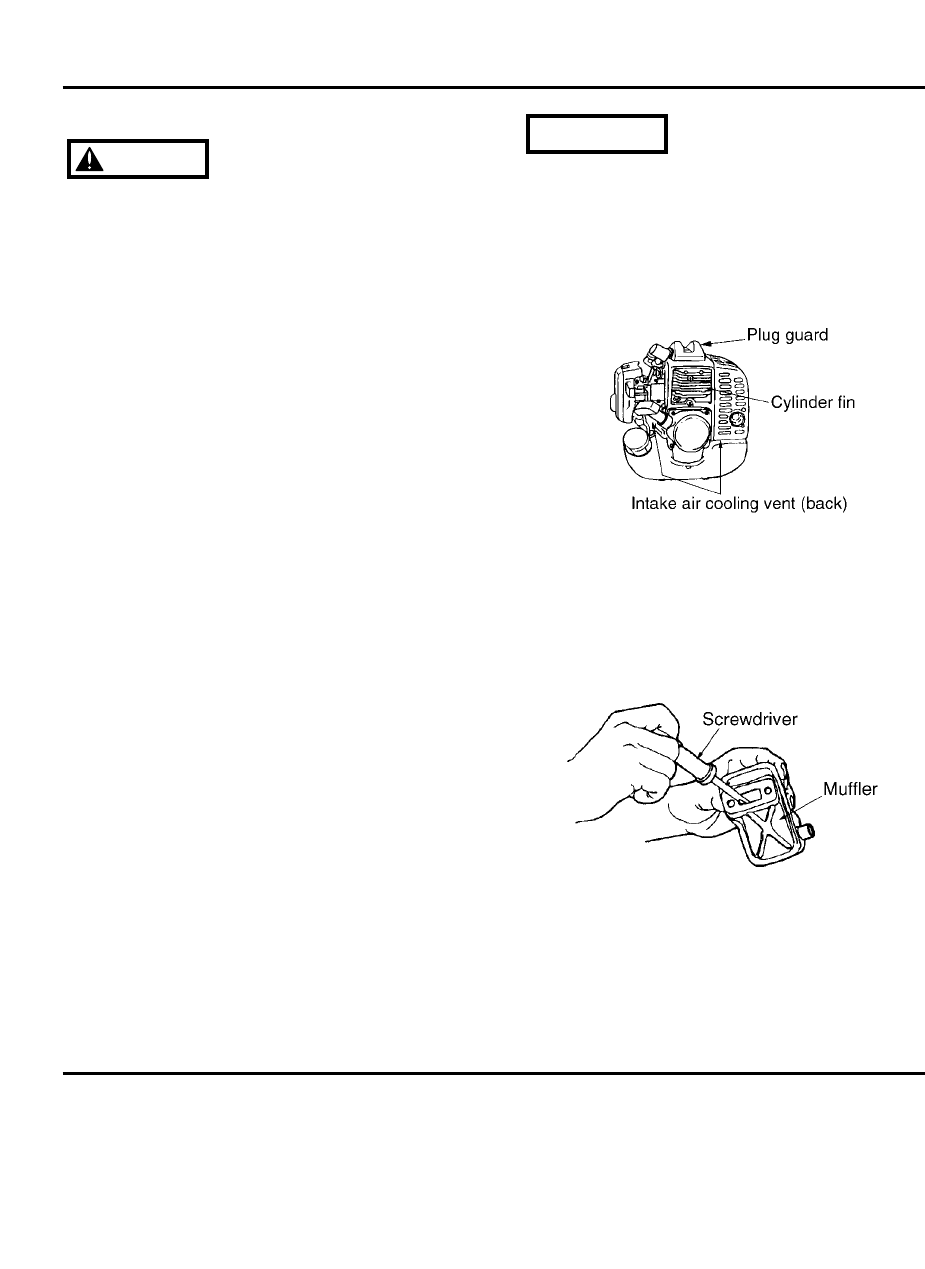
• If waste gets stuck and causes blockage
around the intake air cooling vent or
between the cylinder fins, it may cause the
engine to overheat, and that in turn may
cause mechanical failure on the part of the
brushcutter.
■ PROCEDURES TO BE PERFORMED
AFTER EVERY 100 HOURS OF USE
1. Remove the muffler, insert a screwdriver
into the vent, and wipe away any carbon
buildup. Wipe away any carbon buildup on
the muffler exhaust vent at the same time.
2. Tighten all screws, bolts, and fittings.
3. Check to see if any oil or grease has
worked its way in between the clutch lining
and drum, and if it has wipe it away using
oil-free, lead-free gasoline.
IMPORTANT
■ INTAKE AIR COOLING VENT
• Never touch the cylinder, muffler, or
spark plugs with your bare hands
immediately after stopping the engine.
The engine can become very hot when
in operation, and doing so could result
in severe burns.
• When checking the brushcutter to make
sure that it is okay before using it,
check the area around the muffler and
remove any wood chips or leaves which
have attached themselves to the
brushcutter. Note that failing to do so
could cause the muffler to become
overheated, and that this in turn could
cause the brushcutter to catch on fire.
Always make sure that the muffler is
clean and free of wood chips, leaves,
and other waste before use.
• Check the intake air cooling vent and the
area around the cylinder cooling fins after
every 25 hours of use for blockage, and
remove any waste which has attached itself
to the brushcutter. Note that it is necessary
to remove the plug guard shown in Figure
20 in order to be able to view the upper
part of the cylinder.
WARNING
Maintenance
Storage
• Aged fuel is one of major causes of engine
starting failure. Before storing the unit,
empty the fuel tank and run the engine until
it uses all the fuel left in the fuel line and
the carburetor. Store the unit indoor taking
necessary measures for rust prevention.
❲
17
❳


















